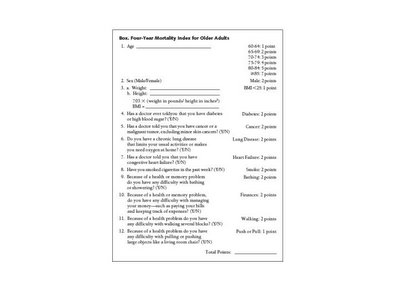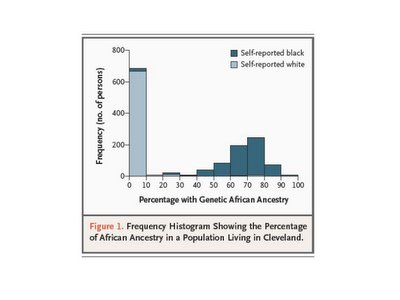Hello and welcome to Grand Rounds 2:22. I decided to highlight 10 posts that I found most outstanding among all those submitted. This was hard as there were many excellent posts. The top 10 are not listed in any particular order.
And take heart if you, like me, suffer from a subclinical case of seasonal affective disorder. Spring is definitely coming! (click on pictures to enlarge)
Featured Articles
Kim at Emergiblog takes a
look at what she has learned from blogging and reading other health/medicine related blogs. As she notes, one of the best things about something like Grand Rounds is seeing the world of medicine and health from others' eyes.
Redstatemoron (his title, not mine) comments on the costs, both financial and physical, of
defensive medicine. I've always felt physicians were by nature defensive (something about the obsessive-compulsive traits needed to get into and through medical school) and that, more than fear of malpractice suits, drove overcautious practice. His examples, however, are persuasive.
Clinicalcasesandimagesconsiders the utility of medicine specific
search engines. These "vertical" search engines cover less area than the more common horizontal ones (e.g. Google) but results are more likely to be relevant. I tried them using my own name and found Omnimedicalsearch worked well, weeding out non-medical references (but also all but one reference to my blog) whereas Kosmix was useless. YMMV.
Dr. Bob
relates life lessons unintentionally imparted to him by a patient on a recent call weekend. Conclusion: Knives, hookers, and cocaine don't mix. Warning, the post itself is fine, but the linked photos are not pretty.
Mary, a nurse and child advocate at The Mote in the Light
agonizes over the decision to remove a baby from her mother, not because of outright abuse, but because mom just couldn't provide the level of care needed given the child's medical problems. The decsion is the right one, but heartbreaking nonetheless.
Orac, in new digs at science blogs, gives a list of
clues that you may be an "altie;" that is someone who is such a believer in alternative modalities of treatment that your fervor is almost religious. Very well done in sort of a highbrow Jeff Foxworthy kind of way.
Know what a transplant coordinator is? It's someone who goes and asks the family of dying people if they can have the organs (no it's not like in Monty Python's
Life of Brian). Along with working with abused kids it's about the toughest job I can imagine. On call at all hours, a subject no one wants to talk about and other lives hanging in the balance. And most good candidates for donation, I think, are young and dying unexpectedly. Ouch. One of those jobs I'm grateful someone else does. Wonder what it's like? Then read
this from a real life transplant coordinator at Donorcycle
Bob at Insureblog
posts about how big pharma is using the new Medicare drug benefit to discontinue programs which provide drugs free or at reduced costs to the poor. Good grief, Charlie Brown.
Dr. Erik Novak writing at
Thismakesmesick.com which is dedicated to cleaning up the mess that is our malpractice system (Good luck! but I like the idea of approaching things from a variety of different angles) blogs about new found sense in the justice system: many bogus lawsuits are now being
dismissed. Now if they would just sue the plaintiffs lawyers for malpractice we'd be on even footing (I am deadly serious about this).
Doctor Inspector Charles
solves a case of unusual bruising in this literary post "the unusual case of Mr. Black". Anti-tobacco zealots should probably pass on this one, what with the furor about smoking in movies and all.
Clinical applications of basic science

In an elegantly illustrated and detailed
post, Bora from Circadiana, a blog all about chronobiology, shows how lithium, commonly used to treat bipolar disorder, also affects circadian rhythyms. This suggests that the underlying cause of bipolar disorder (also known as manic-depression) may have to do with dysfunction of the body's own clock. Very interesting
Gloria posts at Biotech-weblog about a new
instantaneous method of meauring fetal hypoxia. As Redstatemoron notes in his post featured above, the question of when to intervene with C-section for fetal distress is one of the most difficult in medicine. Hopefully this will help.
Blogmeister at Anxietyaddictionanddepressiontreatments notes a controversy
brewing about the possibility of treating addiction with medicines. I'd comment than when one side is publishing papers in
Nature Medicine and the other rebuttals in the New York Times I think I know who's going to be right in the end.
Reports from the front
Keith from Digital Doorway
reflects on two patients rescued from difficult social situations by family and wonders if he'd be as willing to bring a troubled family member into his own home.
TheBlogThatAteManhattan (which combines two of my favorite topics, medicine and food)
posts about the problems that happend when the doctor is out sick, specifically what happened when she had to take time off to fight hepatitis C. No disasters, but a lot of things can fall throught the cracks.
Keagirl, a female urologist at Urostream tells of the
gender discrimination she faces from male patients. I have heard tales of woe from men in OB/GYN but this turns things around. I also like this
post from her relatively new blog.
Dr. John Crippen at NHS Blog Doctor
comments on the reluctance of UK doctors to tell patients that they are dying, and the reluctance of patients to come out and ask. Stiff upper lip and all can't help, but this is a hard subject for doctors everywhere.
Neonataldoc comments on a patient with
holoprosencephaly, a severe failure of brain development, who for some reason is put on a home monitor when (in at least Neonataldoc's opinon) death would be the best thing for everyone involved. Don't miss the first comment by a mother of a child with a degenerative condition who is nearing the end of his life about her struggle with the idea of a "do not resuscitate (DNR)" order.
Enoch Choi at Medmusings
dreams about what a really good electronic health record could do. Take home message: we've come come far, but we've got even farther to go.
Healthyconcerns notes a recent case in
Canada where a surgeon refused to operate on a smoker. Seems unfair, until you read that in the surgeon's judgement, the risks of wound infection or poor healing outweigh the benefit of the operation. I don't see how any system could require surgeons to operate on any patient who thought they needed it.
Commentary
Dr. Joel Furhman of
DiseaseProof.com gives us the top
10 reasons to be skeptical of the recent trial showing no benefit of low-fat diets.
Medviews considers both this paper and the one showing no benefit in calcium supplementation for women, both products of the
Women's Health Initiative. Woody Allen is mentioned.
Marcus at Fixin' healthcare has similar
thoughts, using the analogy of blind men trying to describe the elephant: studies focus on this or that intervention when what is needed is a focus on doing many small things we already know are good for us.
I have a few
thoughts about these studies as well.
Gloria at Straightfromthedoc
notes the introduction of a centralized pharmacy history for patients. I've always marvelled how hard it is to figure out exactly what medicines a patient is on. I know there are privacy concerns, but something like this is sorely needed.
Tara Smith from Aetiology (I had to look it up too) blogs about why "
Pox parties," designed to ensure infection with chicken pox are a bad idea now that we have an effective vaccine. I had no idea these still went on; the Simpson's rerun Sunday night featured a pox party and I thought it was dated. Good comments, too.
Sumer, a radiologist in Delhi, comments on a recent NEJM piece about outsourcing reading of radiological studies. Don't hold your breath Sumer, U.S. radiologists will fight tooth and nail to keep this from happening
Wanderingvisitor considers the question of whether medical events cluster around the
full moon, as the nurses he's worked with believe. Count me a skeptic (other than animal bites, which may just reflect people being out in nature more when there's some light). I suspect a signficant publication bias in the studies he quotes. WV is a very new blogger, this being only his 5th post! Might be some kind of record.
Thecheerfuloncologist
considers the recent JAMA study predicting elderly patients risk of death. He introduces us to an index that purports to measure mortality risk, or at least degree of burnout, in interns. Don't miss his links, one of which (the Camel ad) is priceless.
Tony Chen at Hospitalimpact summarizes a number of recent posts about
hospital strategy. Not only is "hospital strategy" not an oxymoron, but some hospitals apparently have strategies other than maximizing overall annoyance
Kate Steadman at Healthpolicy examines
donut hole (mmm donut holes) health plans. These offer 1st dollar coverage, then a "deductible" after a certain threshold, then at a higher dollar level coverage resumes. Good for the very well (routine doctors visits covered) but as she points out the deductible has to be larger to save money since some of the insured will never reach it.
Medicofone considers an alternative
explanation for the drop in cancer deaths.
DB at the eponymous DBsmedicalrants considers what is and what isn't primary care. He
concludes that the primary care of complex patients should be seen as a specialty in its own right.
Patient's Perspective
Diabetes mine, a recently diagnosed type I diabetes patient,
attended a postgraduate conference on diabetes care. Her perspective is as a patient, not a provider, but she liked the free goodies just like everyone else
Difficultpatient shares her
frustration with those who don't believe ADHD (attention deficit hyperactivity disorder) exists because it does and her son is affected. I agree with her that it may be overdiagnosed (in my opinion teacher's who want compliant students are a prime driver) but there are some kids who are just out-of-control unless on stimulants.
Advice for Patients Dust in the Wind
Dust in the Wind has some
advice for parents bringing their child to the ED which should apply to office visits with kids as well. My rule #1 is "listen to the nurses."
Dr. Emer at Paralleluniverse
recommends staying away from McDonalds french fries, which contain 1/3 more trans fat than previously advertised. He does acknowledge that they taste good.
Occasional Notes Doctor
Doctor,
nee Medical Madhouse Madman,
complains about his difficulty in getting listed on
Medlogs, which is a medical blog aggregator.
Grunt doc asks other ED docs to
pledge not to offer expert opinion unless it is in concordance with accepted standards of care. I'm just guessing this has been a problem in the field.
Rita at MSSPNexusblog reflects that even health chare workers sometimes have
bad hair days. Some of us just have them more frequently than others.
Insider at
Pharmagossip takes a revealing
glance at hiring practices of big pharma in this NOT SAFE FOR WORK post. You were warned.
Geeknurse gives some suggestions about
communication in the medical blogosphere. Unfortunately he doesn't link to the bad example he cites. Oh well, not everyone can be in-the-know. I sympathize with the problem of anonymous flames.
And finally, if the above links aren't enough for you, here is another entire
carnival dedicated to doctors only natural enemies, lawyers. The focus is on health care law.
Next week Grand Rounds is at
Achancetocutisachancetocure.
PS My intention was to include everyone who submitted by the deadline; if I inadvertently left you out, I apologize.










